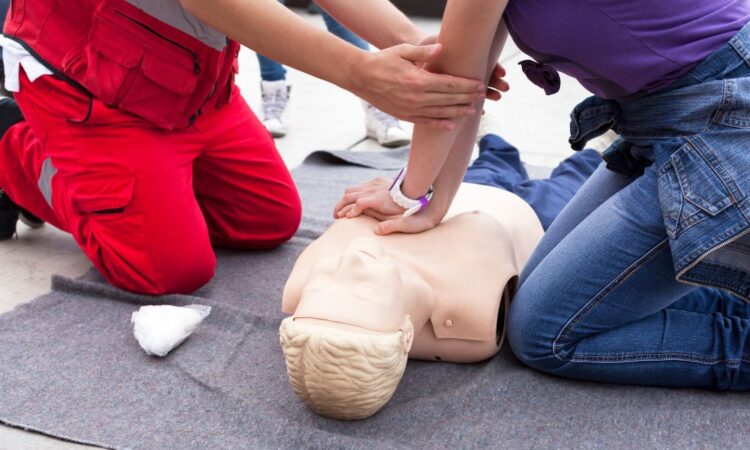Cardiopulmonary Resuscitation, or CPR, is a lifesaver technique used to help people who have stopped breathing or are facing a sudden cardiac arrest. It is sad to know that most people around the world don’t know how to give CPR.
When you know the basics of CPR, you can try to save a person’s life in such a situation. However, if you know CPR properly, you can also teach others the process, saving many more lives. When you have proper CPR training and perform it on the one suffering, the chances of the victim surviving increase.
However, the question arises: Where do you get CPR training? Let’s take a look at the answers.
What are the different options available for CPR training?
When considering CPR training, people have three main options: Online, In-Person, and Hybrid. Each option offers different levels of flexibility, hands-on training, and suitability for various lifestyles.
Training Option
Description
Flexibility
Hands-on Training
Ideal For
Online
Offers flexibility and convenience. Lacks hands-on practice but includes video lectures, interactive modules, and quizzes.
High
Limited or None
Individuals with busy schedules or those comfortable with self-paced online learning.
In-person
Provides hands-on training led by certified instructors. Includes interactive demonstrations, practice sessions, and simulations. Ideal for traditional classroom learners.
Limited
Yes
Those who prefer hands-on learning and benefit from immediate feedback from instructors.
Hybrid
Combines online learning with in-person skills sessions. Offers flexibility of online learning and provides practical skills practice under instructor guidance.
Moderate
Yes, during in-person sessions
Individuals with busy schedules who still value hands-on experience.
What are the multiple types of CPR training?
There are three different types of CPR training.
- The first one is Adult CPR training, which involves training for teenagers and adults at home or the workplace. When you go through Adult CPR training, you become the most important person in the room if someone is prone to cardiac arrest. Around 80% of people die before they can reach the hospital for treatment during a heart attack. CPR is, therefore, an important life-saving skill, considering the growing number of heart issues.
- The second type of training available is pediatric CPR, specifically designed to assist children under the age of eight. The compression technique in kids below the age of 8 differs from those used for adults. If your work or personal circumstances involve regular interaction with children, or if there is a possibility of encountering pediatric medical emergencies, learning pediatric CPR is highly advisable.
- The third type is specifically designed for first responders, such as lifeguards, firefighters, and police officers, who frequently encounter such situations.
Are there any CPR tests?
Yes, after completing your CPR training, you’ll need to take a test to get certified. These tests check your CPR knowledge, usually with written questions.
In some cases, they might also request a demonstration of your learning to gauge your practical understanding.
CPR certifications You’ll receive the certification once you’ve finished your CPR classes and successfully passed the test. For the certificate to be relevant, you must update your CPR certifications every two years.
To renew your certificate, you are required to complete the classes and successfully pass the test.
What are some of the benefits of having a CPR certification?
A CPR certification has numerous benefits that extend beyond an individual’s personal and professional life. Other than the immediate impact of potentially saving a life, it can improve one’s confidence levels and sense of responsibility within their community.
- Once you get certified for CPR, you become eligible to be hired for several jobs in different sectors. Many industries, such as education, childcare, healthcare, sports, fitness, hospitality, residential care, and outdoor recreation, mandate CPR training for their professionals to ensure readiness in emergency situations.
- Your skills can instantly aid a person suffering from sudden cardiac arrest, potentially leading to their survival. This skill remains highly useful throughout your life.
- Many people know about certain basics of CPR; however, being professionally trained is far more valuable than just knowing the basics.
- Being a professional, you can teach people of every age about CPR training so that they can also save a person’s life when you aren’t around.
Conclusion
Many people have heard about and know CPR, but most need more professional CPR training. Once you go through the classes and tests and get the certification, you will feel more confident performing CPR whenever required.
While researching for CPR training, make sure that you find a reputed institute so that you can learn from leading professionals who specialize in cardiac care. When you learn a skill like CPR professionally, you help people around you during cardiac arrests and become an asset to every place you go.

